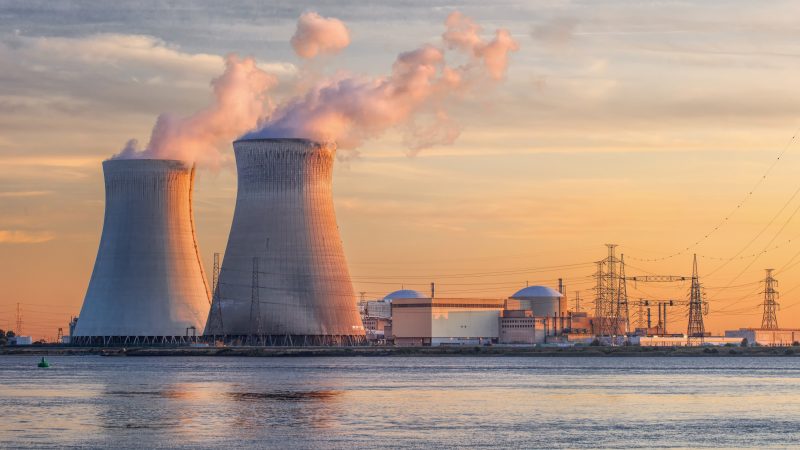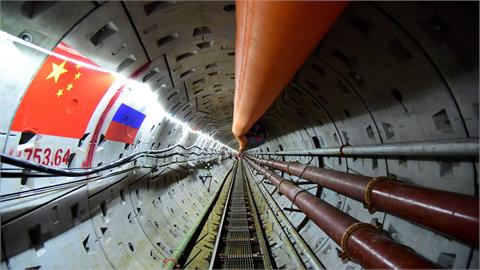by Frédéric Simon* The industry is growing increasingly nervous about European Commission plans to evaluate the safety of radioactive waste handling as an expert report is expected next month on how to classify nuclear energy under the EU’s green finance taxonomy
The European Commission’s in-house research body, the Joint Research Centre (JRC), is putting the finishing touches to a report about the safe handling of radioactive waste that could be fateful for the future of Europe’s nuclear industry.
The report, expected by the end of February or beginning of March, could end up recognising nuclear power as a "transition fuel” under the EU’s green finance rulebook, or on the contrary irreversibly stigmatise it as a polluting form of energy that does "significant harm” to the environment.
"The big issue for us with the taxonomy is that it will enable eligible companies to have access to bonds and funds that have a lower interest rate,” said Jessica Johnson, communications director at Foratom, the trade association representing the nuclear industry in Brussels.
"It means that the cost of finance could potentially be lower if they have access to these funds because the amount of interest they will have to pay back is a lot less,” she told journalists during an online press briefing on Wednesday (9 February).
Poland, the Czech Republic and Bulgaria are planning to build new nuclear reactors to decrease their reliance on coal and meet the EU’s climate goals.
But the classification of nuclear under the EU’s green finance taxonomy could have implications on the amount of financial support that governments will be allowed to provide for new projects under the EU’s state aid rules, which are being revised this year.
"We have seen recent consultations on state aid where reference is made to the taxonomy regulation, suggesting that there could be some link there in the future,” Johnson said. "We don’t know what they will do with that”.
Private banks are reluctant to provide loans for new nuclear projects unless governments back them with substantial financial guarantees and state aid. Renewables, by contrast, are cheaper to build and offer much faster delivery timetables and quicker returns – increasingly without state support.
"We see little economic rationale for new nuclear builds in the US or Western Europe, owing to massive cost escalations and renewables cost-competitiveness,” said rating agency S&P in a note released in 2019.
These issues are acknowledged by the industry. Nuclear power plants are "a very CAPEX-intensive investment with a lengthy construction time lapse: you have a lot of interests accumulating over the construction period,” said Yves Desbazeille, director general at Foratom.
"This question of financing is absolutely essential for our industry in the new build perspective. And it’s clear that the taxonomy in that respect will be also very important,” he said.
But the debate on nuclear in Europe is so polarised that reaching a compromise has proved impossible during negotiations on the EU’s green finance rulebook.
When EU member states and the European Parliament struck a deal on the taxonomy regulation in December 2019, they delayed a decision on how to classify "transition” technologies such as natural gas and nuclear power.
According to opponents like Austria and Germany, the issue of radioactive waste automatically disqualifies nuclear because of the "do no significant harm” principle in the taxonomy, which bars technologies from receiving a green EU label if they undermine a list of six pre-defined environmental objectives ranging from climate change mitigation to pollution prevention and biodiversity protection.
Others like France and Britain, meanwhile, disagreed and blocked an agreement on the taxonomy regulation because it did not recognise nuclear as a "low-carbon” source of electricity, which makes "a substantial contribution” to the first objective – climate change mitigation.
To settle the dispute, the Commission decided to mandate its in-house research body, the Joint Research Centre (JRC), to "draft a technical report on the ‘do no significant harm’ aspects of nuclear energy” and assess whether this should disqualify it from being labelled a "sustainable” or "transition” technology under the EU’s green finance rules.
"While nuclear energy is generally acknowledged as a low-carbon energy source, opinions differ notably on the potential environmental impacts of nuclear waste,” the Commission said in a note explaining its approach to the question.
The report is now due in the coming weeks.
"We understand the JRC are quite far ahead in the drafting of this report,” Johnson said, adding that Foratom expects the assessment to be handed over "at the beginning of March” to the European Commission’s department for financial stability and capital markets (DG FISMA).
Once it is published, the JRC report will be reviewed by two additional experts groups – the first dealing with radiation protection and waste management under Article 31 of the Euratom Treaty, and the second dealing with environmental impacts at the Scientific Committee on Health, Environmental and Emerging Risks.
These two expert groups will have three months to issue their opinion. But EU health experts are "obviously very busy with COVID matters” at the moment, which means there "could be some delay” in getting the opinions from these two groups, according to Johnson, who said the whole expert input process "is expected to be finalised in June”.
Based on this input, the European Commission will then decide in the second half of the year how it intends to categorise nuclear power under the EU’s green finance taxonomy.
At least, this is what Foratom expects because the decision-making process is still unclear.
"Given this timeline, we’ve been in contact with the Commission to see what exactly they’re going to do with nuclear,” Johnson said. The industry’s assumption, she said, is that nuclear will be dealt with in the second half of the year in a so-called "delegated act” establishing detailed technical guidelines for technologies included in the taxonomy.
"Unfortunately, the Commission has indicated that it is unwilling to confirm that nuclear will be included under the second delegated act,” Johnson said.
"From our side, this means we have no clarity on when or if the Commission is going to include nuclear under the taxonomy based on the outcome of the assessment” produced by the JRC.
"And that for us is a big issue because it’s creating a lot of uncertainty.”
When contacted by the EURACTIV, the Commission declined to elaborate on the timeline or the next steps in the decision-making process.
However, it admitted that the question of nuclear’s inclusion in the taxonomy has broader political implications.
"The Taxonomy Regulation reflects a delicate compromise on the question of whether or not to include nuclear energy in the EU taxonomy, and calls on the Commission to further assess this activity,” an EU spokesperson told EURACTIV, repeating a statement posted online in June last year.
To qualify as environmentally sustainable, an economic activity "should both make a substantial contribution to one or more environmental objectives and cause no significant harm to the other objectives,” the EU executive explained.
"The credibility of this assessment is crucial,” the Commission underlined, saying "it must be scientifically rigorous, transparent and bring together a balanced set of views” while reflecting the principle of "technological neutrality” included in the taxonomy regulation.
*Journalist and editor specialised in EU affairs(euractiv.com, February 16, 2021)




